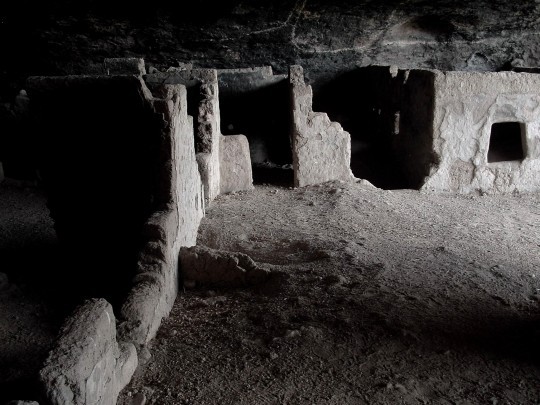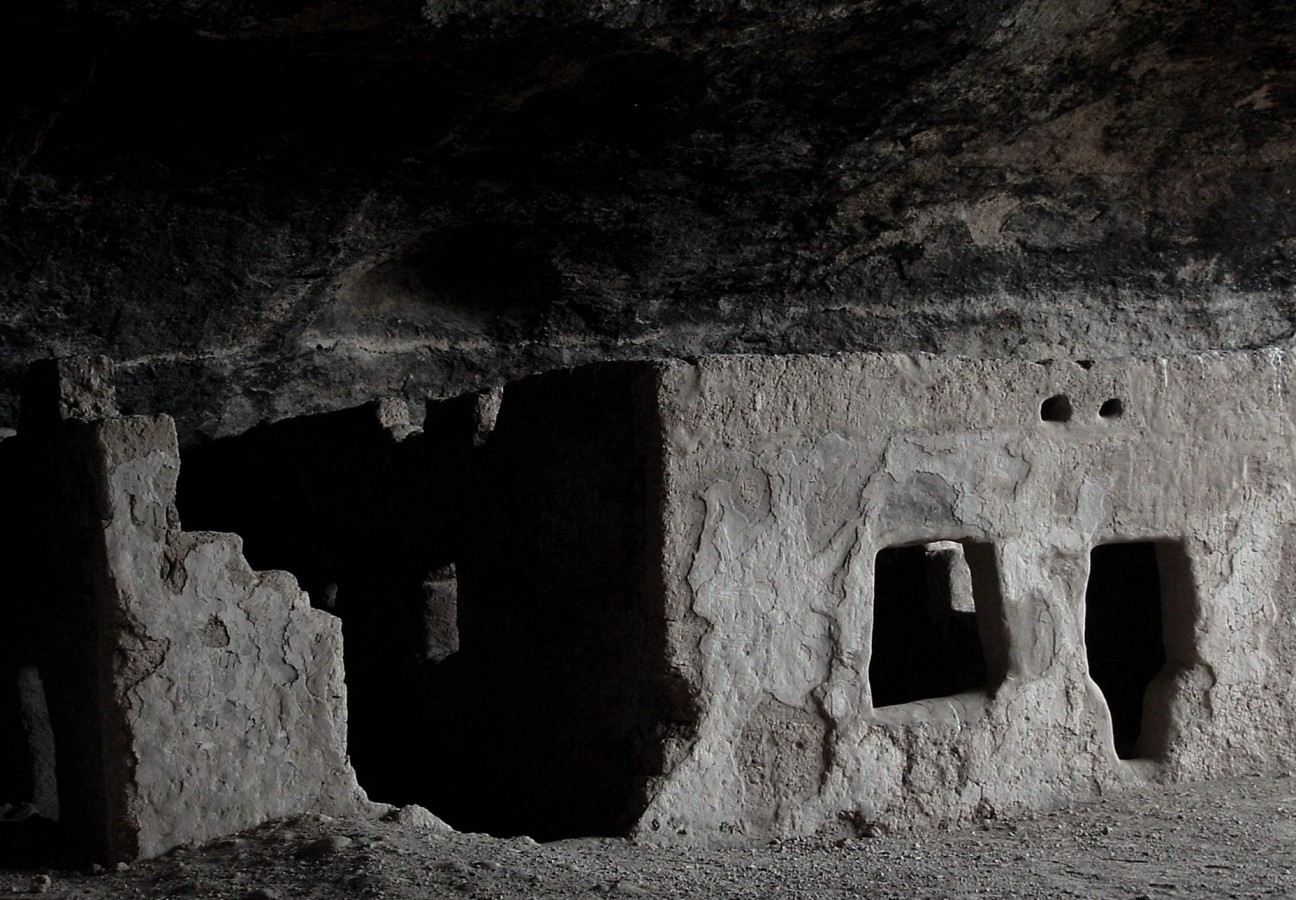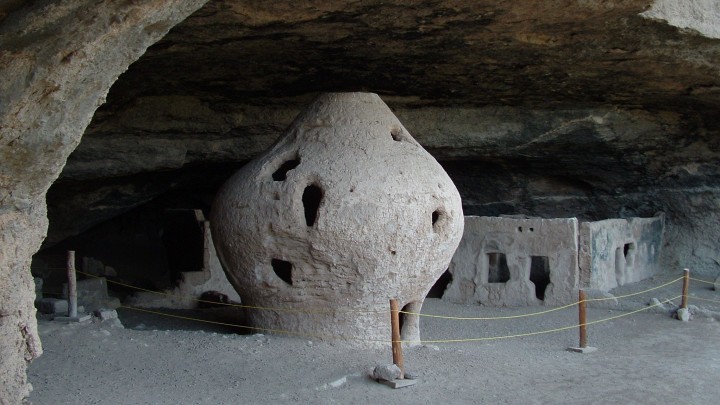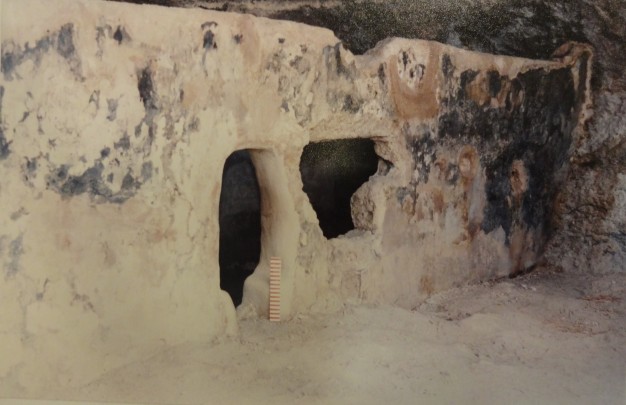Cueva de la Olla
(Cave of the Cooking Pot) Gets its name because a granary of enormous dimensions was found here and its rounded shape resembled a large cooking vessel.
Impressive remains of habitation in the zone which date back to 5500 years BC, the oldest in Arid America and all of Mexico. Remarkable for the enormous communal granary in the shape of a cooking vessel, marvellously preserved, with a structure of twisted dry leaves covered in clay.
About the site
The Cueva de la Olla ("Cave of the Cooking Pot") archeological monuments are in the Municipality of Casas Grandes, in Chihuahua, Mexico, situated in the basin of the Piedras Verdes River, a tributary of the Casas Grandes River.
Cueva de la Olla forms part of a small complex in the so-called Valley of the Caves. This complex is located about 30 miles to the southwest of Paquime and the modern town of Casas Grandes, in the first range of the Sierra Madre Occidental.
Just like Cuarenta Casas, this is a site with adobe structures inside caves, where a variety of characteristics of Paquime culture can be identified. This is a site which has been described in various publications, and Robert H. Lister found two human burials on the site.
The archeological site is notable for the presence of a granary of very large dimensions, which is in the shape of a cooking pot. Numerous descriptions have been published, the oldest of which was written by Lumholtz who visited the cave at the end of the nineteenth century.
Cueva de la Olla forms part of a small complex in the so-called Valley of the Caves. This complex is located about 30 miles to the southwest of Paquime and the modern town of Casas Grandes, in the first range of the Sierra Madre Occidental.
Just like Cuarenta Casas, this is a site with adobe structures inside caves, where a variety of characteristics of Paquime culture can be identified. This is a site which has been described in various publications, and Robert H. Lister found two human burials on the site.
The archeological site is notable for the presence of a granary of very large dimensions, which is in the shape of a cooking pot. Numerous descriptions have been published, the oldest of which was written by Lumholtz who visited the cave at the end of the nineteenth century.
Did you know...
- Groups of people lived in this area who used an ancestor of maize, which dates back to 5,500 years before our era.
- Human skeletons were found in the northern part of the cave. This was a custom of the region’s inhabitants: to bury the dead near or inside their homes.
- The inhabitants of this area maintained a strict organization which allowed them to set up subsidiary towns.
- Remains of the Mogollon culture have been found in the area, such as simple ceramic fragments and other sumptuary materials, which are scarcer, belonging to the Paquimé culture.
- The group who lived in Cueva de la Olla must have comprised at least 30 individuals. They organized themselves to work the flattest areas of land in the vicinity for cultivation.
Practical information
Tuesday to Sunday from 10:00 to 16:00 hrs. Last entry 14:00 hrs.
Free entry
Se localiza a 55 km al noroeste de la cabecera municipal Casas Grandes, en el Valle del Río Piedras Verdes.
Take the Casas Grandes road in the direction of Mesa del Huracán until km 60, where the exit for the Casa Blanca ranch is located.
Services
-
+52 (614) 410 8733
-
This email address is being protected from spambots. You need JavaScript enabled to view it.
Directory
Museo de las Culturas del Norte
+52 (636) 692 4140
+52 (636) 692 8009













